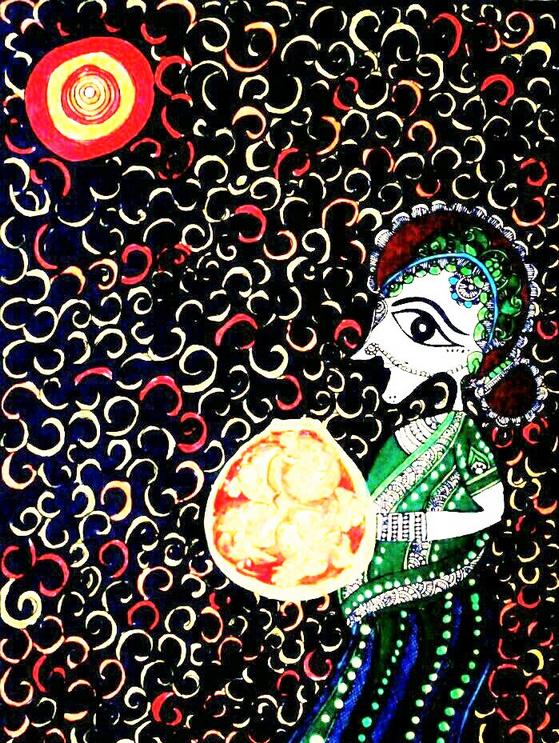
[This piece of article is provided by Ms. SONAM DHINGRA who is a prominent art teacher at City Vocational Public School, Meerut, by profession and an artist herself. She has done in-depth research on indian arts and crafts.]
Madhubani Paintings are an indigenous art form of a quaint village of Bihar. Here the women of the village maintain a matriarchal dominance over the craft. They paint figures from nature and myth on household and village walls to mark the seasonal festivals, for special events of the life-cycle, and when marriages are being arranged they prepare intricately designed wedding proposals, and the technique of painting is safely and zealously guarded by the women of this village, for it is to be passed on by a mother to her daughter. Long before there were no computers in most of our homes, there was Mithila Art in homes of what is now India and Nepal. Originally, this folk art form mainly consisted of lively murals painted on the walls of homes in rural villages. But it was much more than simple art for art’s sake.
“Mithila painting is part decoration, part social commentary, recording the lives of rural women in a society where reading and writing are reserved for high-caste men”. (Arminton & Mayhew, 2006).
